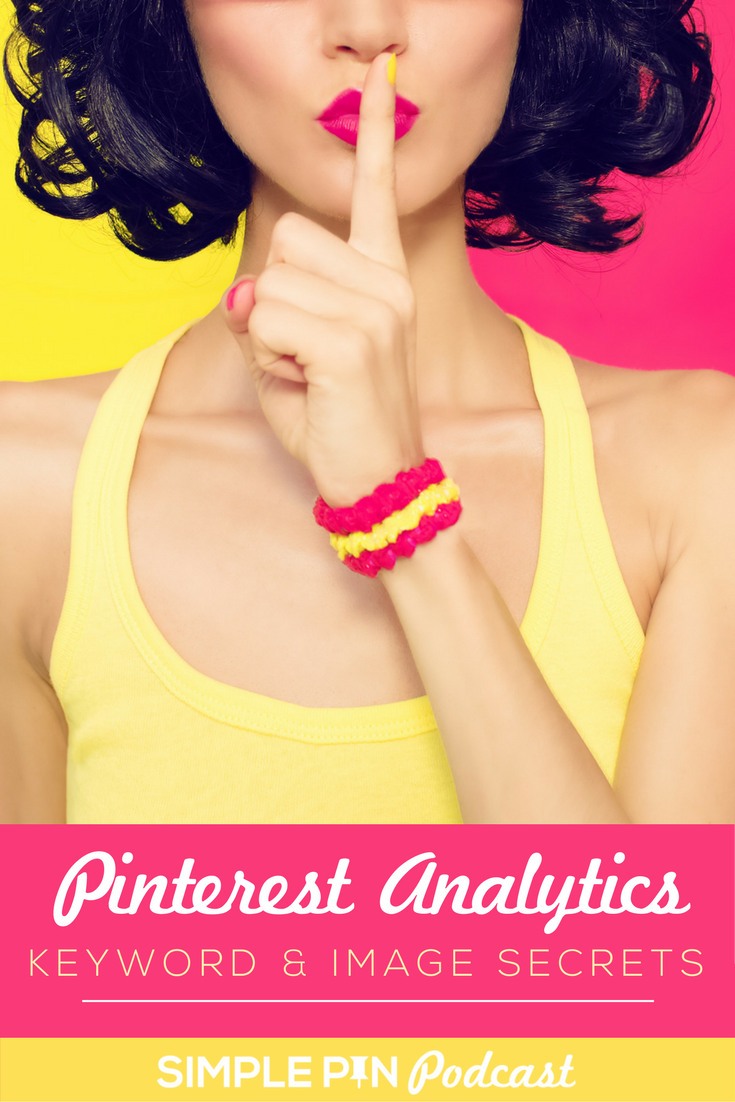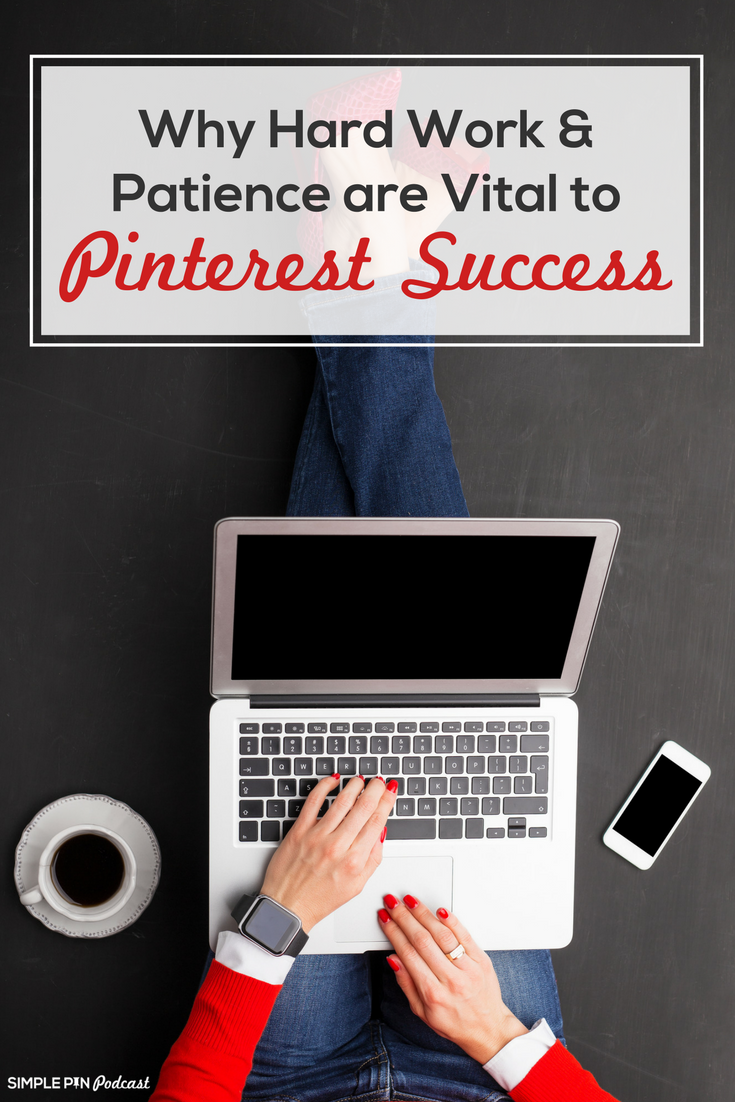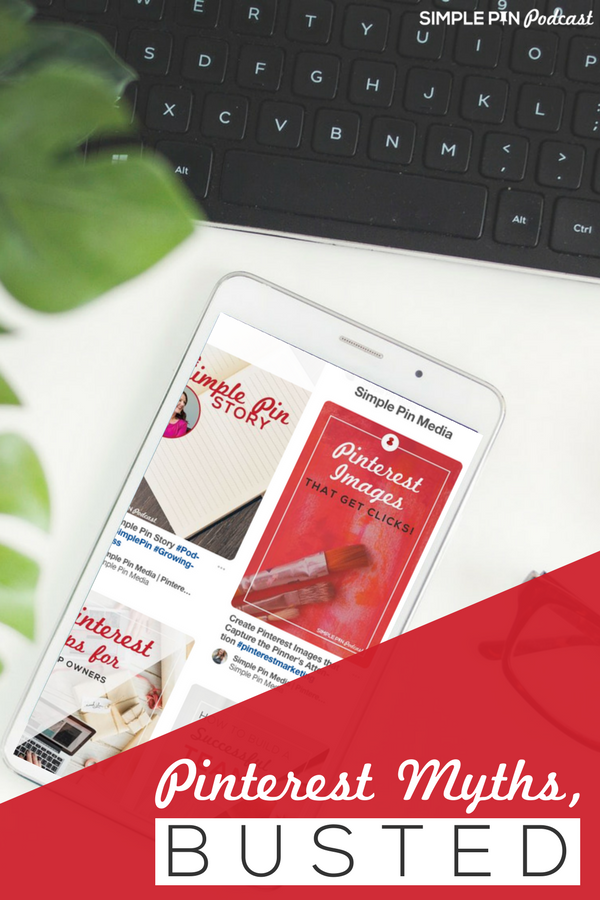Back in Episode 72, I spoke with Kristie Hill about how to understand and use Google analytics for your Pinterest page. We didn’t talk much about Pinterest analytics in that episode, frankly because they frustrate me and I never saw their usefulness. But all that changed when I met Monica, who quickly showed me how to use Pinterest analytics the smart way — to gain information that I was not aware of.
Monica is a blogger at Redefining Mom and she began her blog while she was still working a corporate job. After quitting her job, she went full-throttle into blogging as a business. Pinterest piqued her interest when she realized it was similar to the corporate marketing techniques she knew so well.
Monica feels like she is different from the majority of bloggers; instead of possessing a creative brain, she has a more analytical brain. She became so engrossed in Pinterest and learning about how it worked, that she started to provide Pinterest training and account reviews for other online businesses.
In today’s podcast, Monica really take us on a deep into Pinterest analytics to show us how to get the most out of it. Let’s dive in.
How to Use Pinterest Analytics: Keyword and Image Secrets
Activity from your Website
Let’s start with the tab, “Activity from your Website.” One of the first things you will notice is that some of the pins have a “p” or an “r” beside them. The “p” stands for promoted pins and the “r” identifies rich pins. A quick aside; all of your pins should have an “r” beside them because you should be taking full advantage of rich pins. We will be ignoring the promoted pins for this session.
As you look at your analytics for the past 30 days, here are some things to take notice of —
- Impressions are the number of users that Pinterest has shown your pin to. This doesn’t indicate they took any action on your pin. It just means that a user came across the pin as they were scrolling.
- Clicks mean just that…someone clicked on your pin (either on purpose or by accident). Google analytics will show you how many people actually clicked through to a loaded page on your site.
- Saves – (formerly repins) indicate the number of users who have saved your pin to a board.
Keep in mind that impression and click rates will never be close in number. Clicks will always be just a fraction of the impression number.
Find the complete glossary of analytics terms from Pinterest here.
Looking for Trends
The point of looking at your Pinterest analytics is to begin to see trends in your account. Monica has set up a benchmark for her own account.
She gave a great example of how to use the numbers in analytics to figure out some things. For example, she has a pin that has over 6,000 impressions, but only 12 clicks. By comparison, she has another pin that has around 7,000 impressions with 108 clicks.
The question to ask here is, if Pinterest is showing the first pin, why aren’t people clicking on it, especially if it is showing up well in search? She would expect the clicks on the first pin to be higher. So she began to ask herself questions, like: is the image keyworded correctly? Is the image not “click-worthy?”
Related: How to Keyword on Pinterest
A/B Split Testing
To figure out why this pin was underperforming, Monica decided to split testing the image.
She made a second pin, keeping the same pin description and keywords, but modified the image. She created a shorter pin (735 x 1102 instead of 735 x 1500). On this one, she used the same text overlay and only changed the image. On a second one, she changed the image and the keyword on the image. Since she created these new pins only a few weeks ago, she’s still waiting to see the results.
The key to A/B split testing pins is to give your tests at least 30 days in order to make an accurate assessment of the results (which gives Pinterest enough time to circulate the new pins).
Low Impressions
Monica talked a bit about high impression numbers, but what if you uncover a pin with an unusually low impression number?
First, if a pin has a low impression but high click frequency, leave it alone! Monica has a pin with under 3,000 impressions but over 100 clicks. That’s not something to be mess with. When Pinterest shows this pin, it is getting results.
Pins that have 2,000 impressions or less are typically keyworded incorrectly. If the keywording is off, Pinterest doesn’t know what the pin is about and so they won’t show it. The image can sometimes be a problem, but usually, if impressions are that low, you have a keyword issue.
Monica changes the keywords in the description before touching the image. She then A/B split tests the pin with the two different descriptions. If that doesn’t bring a higher number of impressions, she then changes the image.
*Monica goes into some amazing detail on how to find keywords in the episode. Start listening at 22:00 to revolutionize the way you do keyword research!
Time Management
This all sounds really good, doesn’t it? But you’re already short on time and adding all of this Pinterest analytics research isn’t helpful if it’s going to take up a ton of your time.
Believe it or not, Monica accomplishes this in a one-hour block just once a month. It doesn’t always take the full hour either. The time invested depends on whether she has pins that require some problem-solving. If she has to create new images, it may take 1 ½ hours. But again, it’s just once a month.
Obviously, you don’t want to do this for every pin. Save this type of work for those pins where you really want to drive someone to your site because you’re trying to get your reader to take a specific action. It could be to sign up for your email list or join your Facebook group. If a pin isn’t directing the reader to take some action, don’t bother tweaking it.
This post contains affiliate links, which means if you make a purchase through these links, I may receive a small commission at no extra cost to you. Click here to read my full disclosure policy.
Combining Analytics
You don’t want to just use Google or Pinterest analytics. Tailwind is also a crucial part of your analytics arsenal it comes to board insights, especially group boards.
Combine Tailwind analytics with the tab called Top Boards with Pin Impressions in your Pinterest analytics to get a fuller picture of which boards are performing well for you and which ones aren’t. Tailwind’s virality score should not be looked at alone because it is judging the group board as a whole, which includes all members’ content. Whereas Pinterest analytics are focused on your own pins, not those of everyone in the group.
Collaborating
Monica doesn’t use her one hour per month to join or leave group boards. What she will do is find ways to collaborate with other pinners. She first looks to see which group boards are performing well for her and getting her more clicks.
At the end of the day, clicks lead to conversions.
— Monica Froese
When digging through these analytics, Monica finds instances where her pins with the most clicks aren’t even from her own boards, but from someone else who shared her pin on their own personal or group board. If it’s a group board and the content fits well with her own content, she may ask to join that board.
But if it’s not a group board, she reaches out to the individual pinner to ask for a collaboration. It might mean asking if the pinner owns a group board she can join, or agreeing to share each other’s pins.
Here’s an action item for you – Build in an hour to dig into your Pinterest analytics and follow the steps that Monica has outlined for us. Get familiar with what you see and then start trying some different things to see what changes you can effect by changing keywords or images.
Connect with Monica at Redefining Mom
- Redefining Mom Blog
- Read her Pinterest IPO report — it’s fascinating!
Time Stamp-
Intro
3:45 Redefining Mom
7:15 Activity from your website
12:50 Noticing trends
14:55 A/B split testing
20:00 Low impressions
22:00 Finding keywords
27:25 Time management
30:00 Combining analytics
32:55 Collaborating
36:30 Action step
38:50 ConvertKit Masterclass










I look forward to the results of the image test! Pinterest keeps hammering on 2:3 and 1:1 images, yet I can only find 3 “normal pin size” images in my top 50 (47 are infographics).
Question on “Clicks” – It sounds like Monica is saying they “clicked” to your site, whether they meant to or not. Doesn’t “Clicks” just mean someone opened the pin from the feed?
Hello Kate,
Very informative post over here 🙂
I am learning for the first time about Pinterest analytics and this sounds to be very promising to me. We all know that
pinterest has emerged as one of the most effective social media platforms which is very much capable of bringing traffic
to our blogs, as its also a kind of search engine.
Great to know about Monica’s journey over here on this topic, how she has created a win win situation for her self
by using pinterest analytics.
It would be great thing to add, to drag people on to our space but also its important to provide them with the same information
for which they are looking for.
Thanks for the share.
Shantanu.
Good morning Kate,
Just me stopping by to comment on this wonderful Pinterest analytics blog post. I’ve always wondered if I’m doing too much by adding more than 10 relevant hashtags per Pinterest pin. I strive to add is much content as possible to the in description section along with the hash tags. But I am wondering nowadays if the hash tags might be hurting me or still helping me. What do you think?
One thing I discovered today is now that I am spending more time on Pinterest and adding more content to my pin descriptions, my search engine rankings have significantly improved. Though I’m not posting five times a day to Pinterest nowadays, I’m still benefiting from high traffic. My SEO though is still good but needs more improvement. Perhaps I need to upload more images and write more descriptions, so my search engine rank can improve further. How many times a day do you post to Pinterest if I may ask? 🙂
Hi Kate! Big fan here! Why does the first pin never show up in Google Analytics?
I’m not 100% clear on your question, but if I had to guess, I believe you are referring to the links that contain a “/” instead of a pin link. That “/” indicates that the click came from a someone clicking on your content as it was served up in the Smart Feed. Hope this helps!
I don’t understand this part of the article:
Pins that have 2,000 impressions or less are typically keyworded incorrectly. If the keywording is off, Pinterest doesn’t know what the pin is about and so they won’t show it. The image can sometimes be a problem, but usually, if impressions are that low, you have a keyword issue.
Because a pin does get a certain specific number of impressions could be more than one thing, why does it have to be automatically assumed to be keywords? Isn’t every niche different ? What about algorithm changes?
Is this article referring to organic impressions or promoted pin impressions?
It doesn’t have to be a keyword issue, but Monica’s process of investigating what’s going on with a low-impression pin is to first alter the keywords to see if that “fixes” the issue. As you mentioned, there could be a number of other things going on, but that’s where she starts. The podcast is focused on organic impressions